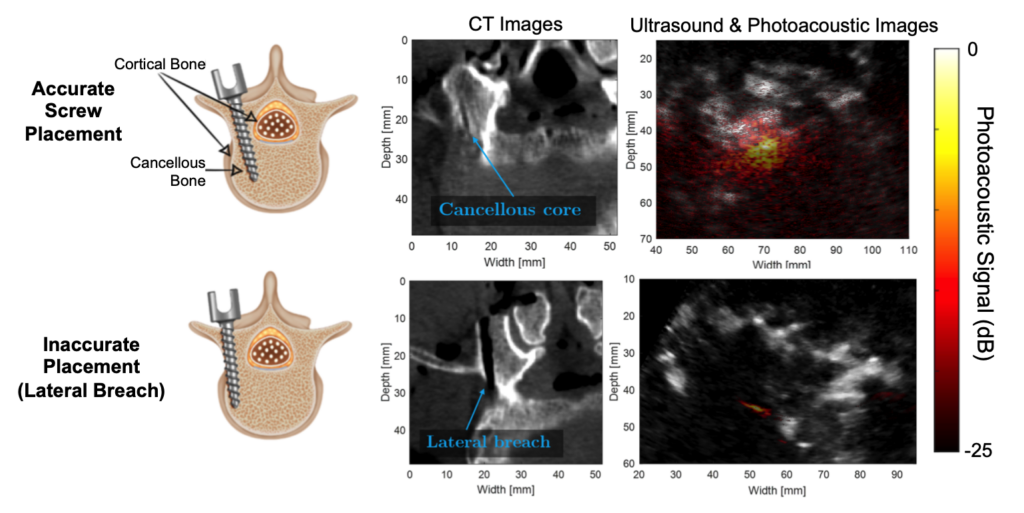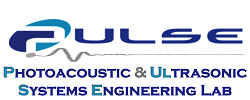Congratulations to Eduardo González! His first-author journal paper entitled Combined ultrasound and photoacoustic image guidance of spinal pedicle cannulation demonstrated with intact ex vivo specimens was accepted to the journal IEEE Transactions on Biomedical Engineering.
 This paper presents the first known combined ultrasound and photoacoustic image guidance system with software capabilities that are optimized for pedicle cannulation in posterior spinal fusion surgery. We demonstrate that both amplitude- and coherence-based beamforming methods are mutually beneficial for this task. Specifically, coherence-based beamforming of ultrasound images improved the visualization of bone for ultrasound-to-CT registration, while coherence-based beamforming of photoacoustic images improved target localization, which is important for tracking tool tips during pedicle hole creation. As shown in the figure, amplitude-based photoacoustic beamforming differentiated signals associated with an optical fiber place inside a pedicle hole (which is ideal for screw placement) from signals associated with an optical fiber touching cortical bone (which is characteristic of an impending bone breach that needs to be avoided). This proposed combination of imaging modalities and beamforming methods is promising to assist surgeons with identifying and avoiding accidental bone breaches during spinal fusion surgeries.
This paper presents the first known combined ultrasound and photoacoustic image guidance system with software capabilities that are optimized for pedicle cannulation in posterior spinal fusion surgery. We demonstrate that both amplitude- and coherence-based beamforming methods are mutually beneficial for this task. Specifically, coherence-based beamforming of ultrasound images improved the visualization of bone for ultrasound-to-CT registration, while coherence-based beamforming of photoacoustic images improved target localization, which is important for tracking tool tips during pedicle hole creation. As shown in the figure, amplitude-based photoacoustic beamforming differentiated signals associated with an optical fiber place inside a pedicle hole (which is ideal for screw placement) from signals associated with an optical fiber touching cortical bone (which is characteristic of an impending bone breach that needs to be avoided). This proposed combination of imaging modalities and beamforming methods is promising to assist surgeons with identifying and avoiding accidental bone breaches during spinal fusion surgeries.
These new findings nicely complement our previous findings demonstrating that photoacoustic-based differentiation is possible prior to the creation of any holes, which is advantageous for correctly determining an appropriate starting point for hole creation. Together, these findings represent a complete system that can be used prior to and during pedicle hole creation for spinal fusion surgeries.
Citation: González E, Jain A, Bell MAL, Combined ultrasound and photoacoustic image guidance of spinal pedicle cannulation demonstrated with intact ex vivo specimens, IEEE Transactions on Biomedical Engineering (accepted December 17, 2020) [pdf]
